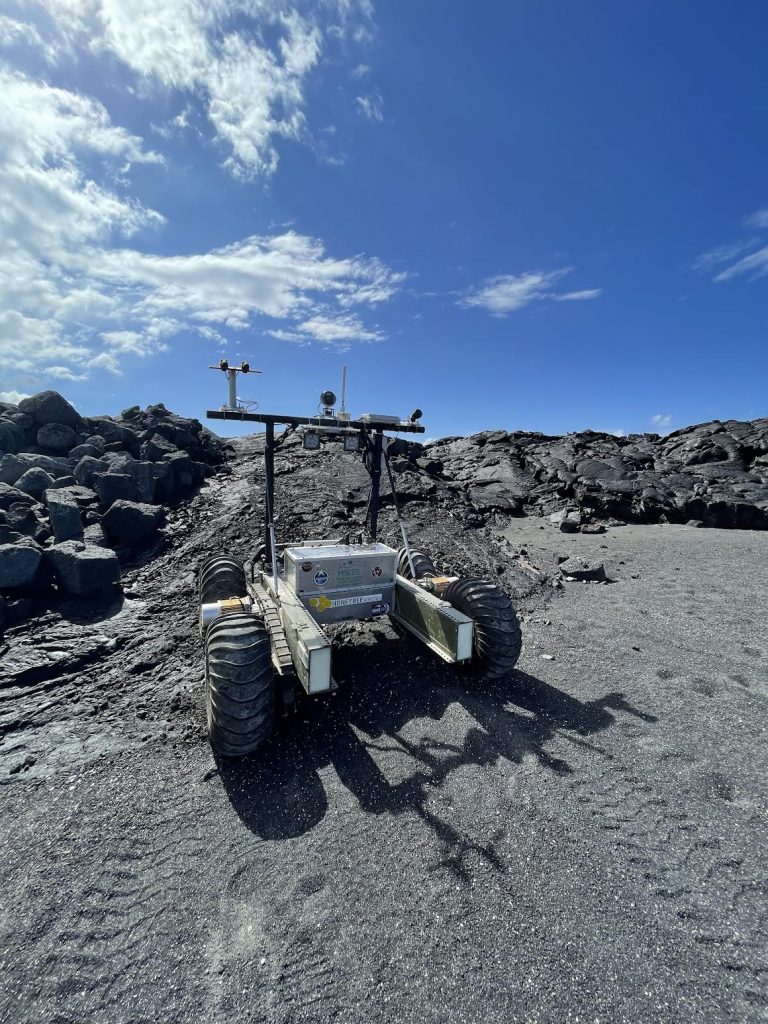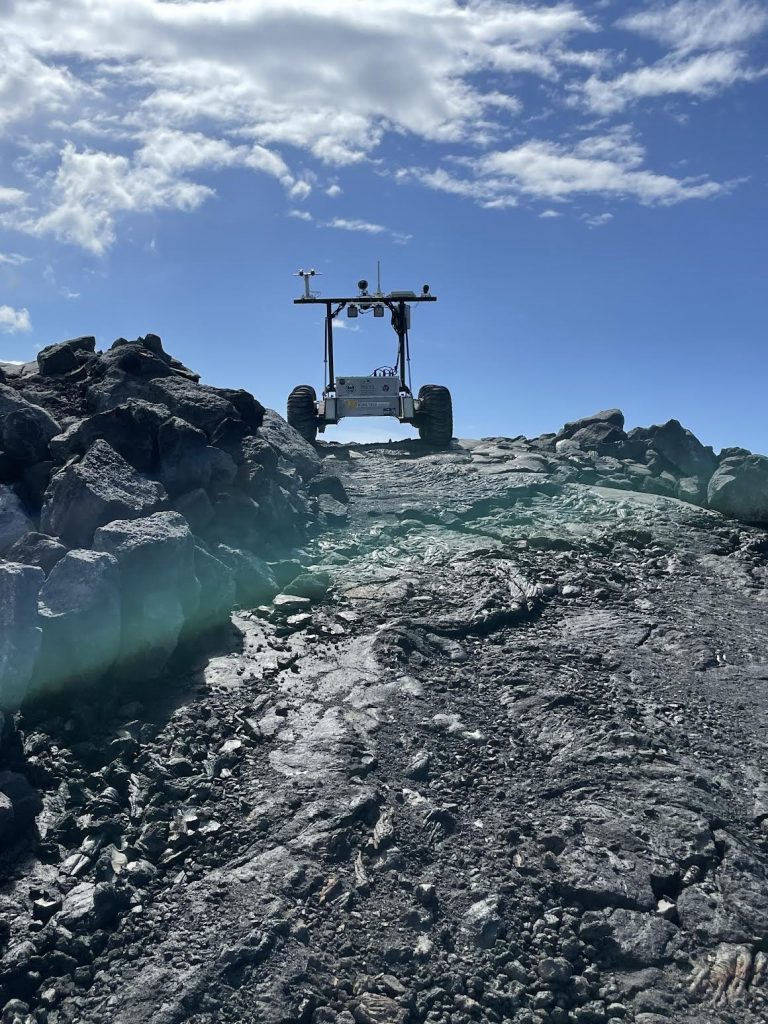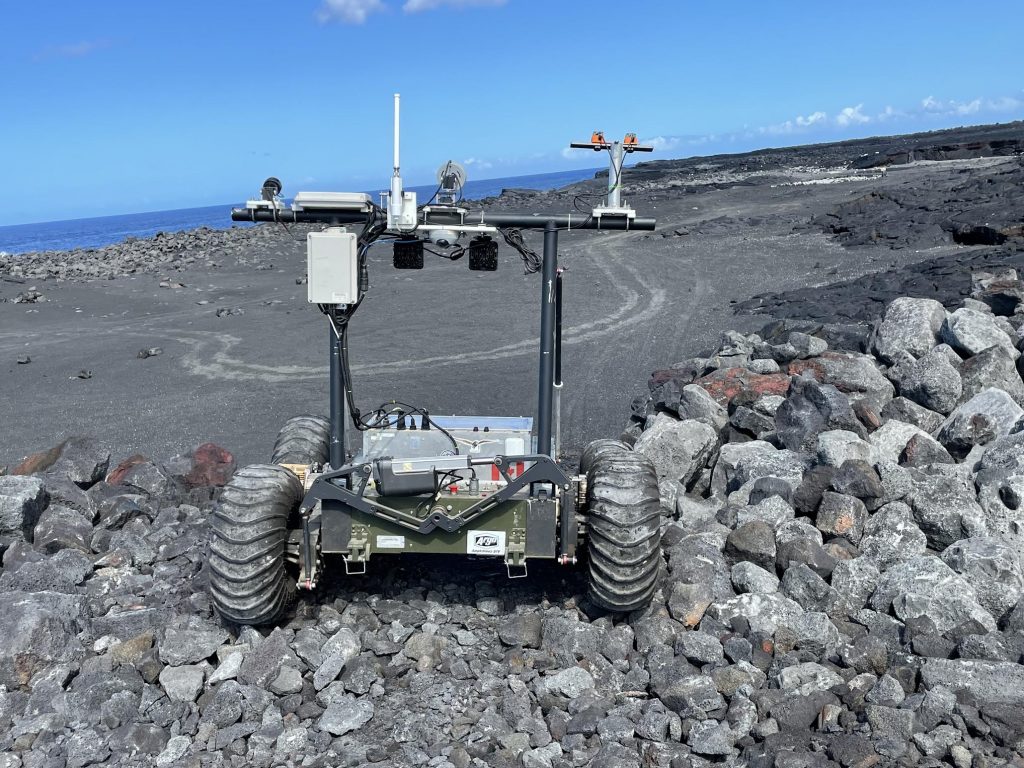Moon enthusiasts in California remotely operate 700-pound planetary rover in Kailua-Kona
The 700-pound rover wasn’t on the moon — it was on rugged volcanic terrain that mimics the lunar surface, in Kailua-Kona. The drivers operating the rover were not in Hawaiʻi, but more than 2,000 miles away in California.
During Wednesday’s simulation of space exploration, 15 drivers from private industry and academia remotely navigated the PISCES planetary rover called Helelani (heavenly travels) at Hawaiʻi Ocean Science and Technology Park. They gained valuable experience in operating a rover from a great distance.
“It’s not as simple as picking a control and controlling it like a remote control car. There’s a method to it,” said Christian Andersen, head of the PISCES program. “The physics you have to overcome isn’t as simple as touching a button. There’s planning and patience needed so you don’t go off a cliff.”
Anderson said there were two ways a driver could operate the rover: using a trackpad or typing line instructions.
The simulation — a partnership between the University of Hawai‘i at Hilo’s Pacific International Space Center for Exploration Systems (PISCES) and the International Moonbase Alliance — was part of the Moon Village Association’s annual workshop and symposium.
The Moon Village Association was created in 2017 as a non-governmental organization based in Vienna, Austria. It acts as a permanent global informal forum for stakeholders like governments, industry, academia and the public interested in the development of the Moon Village. More than 50 countries are represented in the association.
The PISCES rover has been a learning platform for university students for several years. First obtained from the Canada Space Agency in the early 2000s, the rover has given students and interns with the PISCES program an opportunity to design cameras for navigation, computer control systems and other operating capabilities.
The simulation gave students the opportunity to see how to improve the software on the exploration device.
Andersen said Wednesday’s simulation also gave students ideas for future designs. One includes adding controlled time delays. A rover on Mars or on the moon won’t react to a command instantaneously — it could take several minutes.
That explains why Rodrigo Romo, Maunakea visitor information center manager, said a rover is not like a typical vehicle: “You want to operate it slowly.”
Another design students are working on is creating a better sense of depth with a stereoscopic camera setup, which offers a perspective with human eyes.
Wednesday’s simulation was the second of its kind since International Moon Day in July when students from Pakistan, India, Austria and Costa Rica remotely operated lunar rovers at the Puu Waa Waa Ranch in Kona and in Canada. It was organized to support and celebrate lunar exploration research.
Andersen said rovers provide the ability to explore space environments, like Mars and the moon, without risking the life of an astronaut. Rovers and robotic systems also are used for basic infrastructure for long-term construction.
Hawai’i Island has been a testing ground for space exploration dating to the 1960s, when NASA had first trained Apollo astronauts and tested the lunar rover systems. NASA regarded the area as one of the most realistic terrestrial and lunar-like they had found due to the high altitude with greater solar radiation intensity, dry environment weather conditions and availability of lunar regolith-like deposits of volcanic ash.
Andersen said there are at least three rovers currently on Mars.












